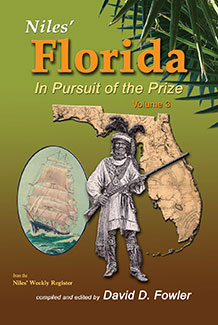Niles' Florida: In Pursuit of the Prize
Volume 3
Subsequent to the final ratification by Spain of the Onis-Adams treaty, on March 10, 1821, U. S. President James Monroe appoints General Andrew Jackson Commissioner of the United States to take possession of Florida and gives him the full powers of governor. In true diplomatic fashion, East Florida is turned over to the United States. West Florida follows suit in a somewhat less elegant, yet formal, ceremony.
Among the immediate tasks of the new Florida government, the security of the southern shores of the peninsula comes to the forefront. The actions of Navy Commodore Porter against the marauding pirates are heroic on a par with the actions of General Jackson at New Orleans. Yet, the real enemy of the sea-faring defenders of Florida is Yellow Fever.
The Indian Removal Act, signed into law by Andrew Jackson on May 28, 1830, authorizes the president to grant unsettled lands west of the Mississippi River in exchange for Indian lands within existing state borders. Colonel Gadsden, long-time crony of the President, concludes a treaty with the Seminole Indians, on May 9, 1832, at Payne’s landing, providing for the relinquishment, by that tribe, of all their lands in Florida, to the United States, and their removal west of the Mississippi.


